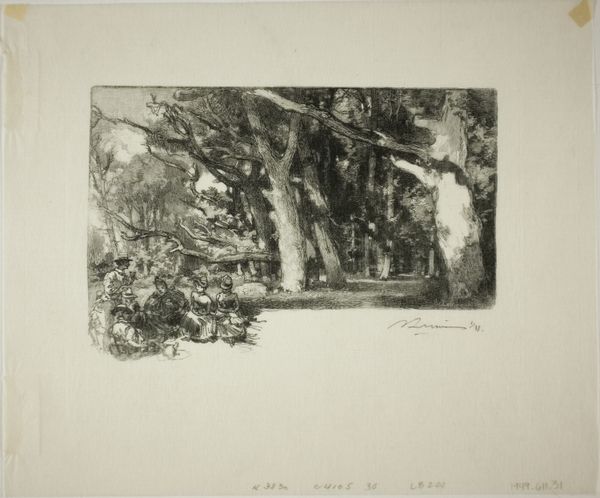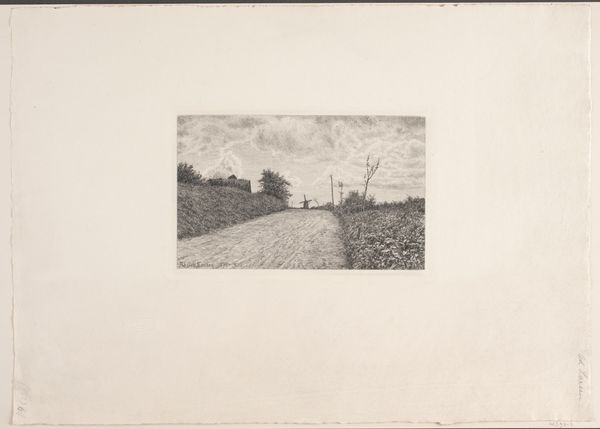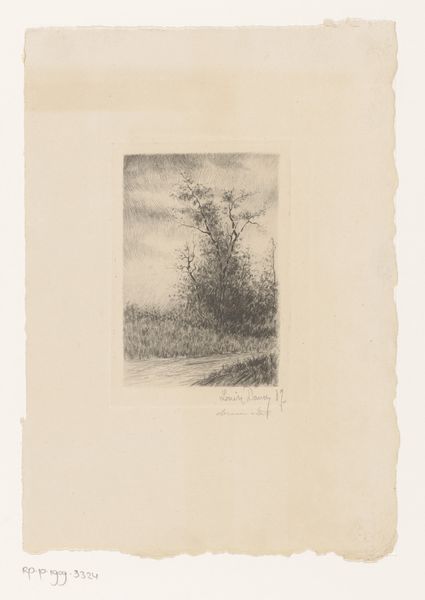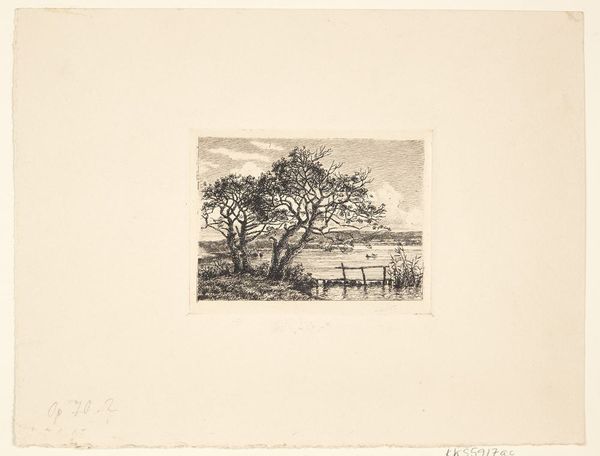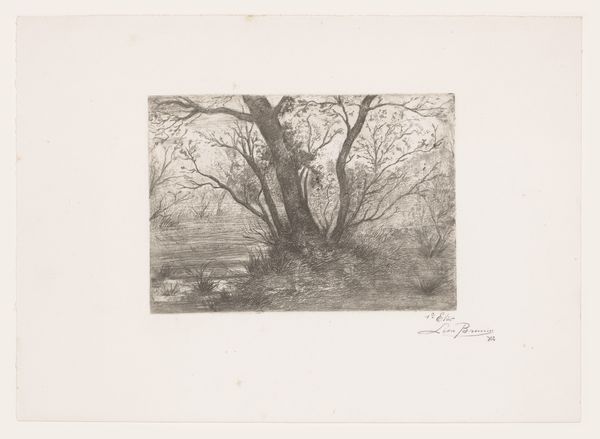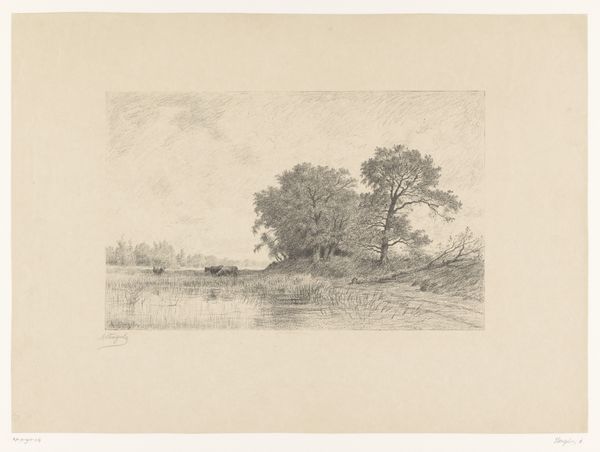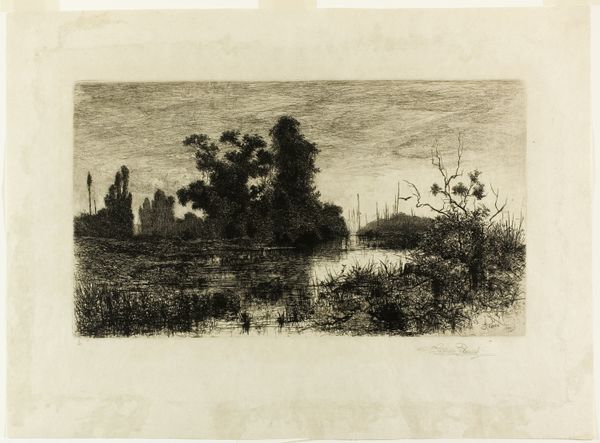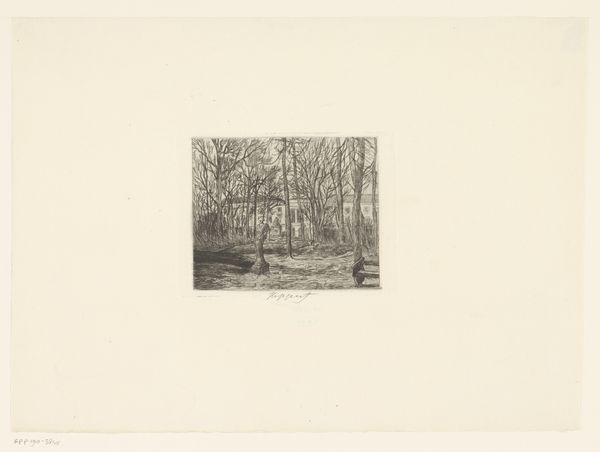
Dimensions: 186 × 253 mm (image); 258 × 345 mm (chine); 344 × 473 mm (sheet)
Copyright: Public Domain
Curator: Let’s take a closer look at Joseph Pennell's 1881 drawing, "Under the Hill," currently residing here at the Art Institute of Chicago. Editor: A rather stark image, isn't it? All that bristling grass and turbulent sky, rendered in monochrome. I’m struck by the almost unnerving tension. It’s both serene and deeply unsettling. Curator: Interesting you say that. It's charcoal and pencil on paper, and notice how Pennell employs bold strokes for the foreground. It speaks volumes about the labor and the immediate, almost performative, process involved in creating this Romantic landscape. How would you interpret such contrasting techniques, in terms of symbolism? Editor: Well, the dynamic clouds looming above seem to speak to a psychological burden. Given the Romantic period in which it was produced, one might associate the dark tones with grief, even existential angst. Even that single bird... ominous! Curator: Indeed. The consumables themselves, paper and charcoal, also speak to accessibility, broadening participation within printmaking culture during Pennell's time. The paper itself looks relatively mass-produced; a contrast between high-art subject and practical making. Editor: I notice how the long grass obscures the land behind it, which creates a fascinating barrier. It is difficult to ignore nature, while that horizon, or what is left of it, leaves much to the imagination. What memories and feelings does it conceal? Curator: Considering your attention to symbolism and that "hidden" space, let's consider its influence of industry. During that era, these idyllic spaces were undergoing monumental transformation by modernization. This print would both depict, and also "become" the pastoral. Editor: You're right. This drawing is far more than it seems. It reflects on individual emotional states and speaks volumes about collective anxiety about change. A clever mix of materials delivering an emotive payload. Curator: It's always revealing to consider not just what is depicted, but what raw stuff gave it form in the first place! Thanks to materiality we come closer to historical contexts behind the making of Under the Hill.
Comments
No comments
Be the first to comment and join the conversation on the ultimate creative platform.


